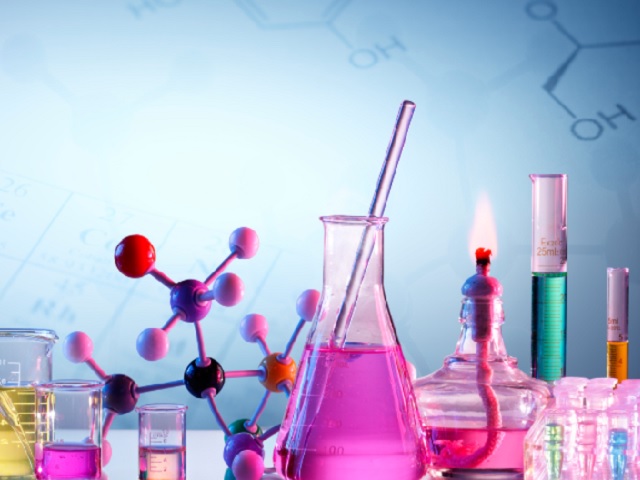
Here’s something interesting:
Aluminum is used in the aerospace industry not just for building planes but also for generating hydrogen gas on demand.
But how do scientists know exactly how much aluminum they need to produce a specific amount of hydrogen gas?
This is where stoichiometry steps in.
Today, we’re going to break down a practical problem:
How many grams of aluminum are required to produce 3 moles of hydrogen gas?
By the end, you’ll not only get the right answer but also understand how to approach these types of problems with confidence — every single time.
Problem Statement
Here’s what you’re being asked:
How many grams of aluminum (Al) are needed to produce 3 moles of hydrogen gas (H₂)?
Given data:
- Balanced chemical equation:
2 Al + 6 HCl → 2 AlCl₃ + 3 H₂ - Atomic mass of aluminum (Al): 27 g/mol
With this information, we can now walk through the solution step by step.
Step 1: Analyze the Balanced Chemical Equation
The very first thing you should always do is look at the balanced equation.
It tells you the exact proportions in which reactants combine and products are formed.
For our reaction:
- 2 moles of aluminum react with
- 6 moles of hydrochloric acid (HCl) to produce
- 3 moles of hydrogen gas (H₂).
From this, we extract the mole ratio between aluminum and hydrogen gas:
2 Al : 3 H₂
This ratio means that 2 moles of aluminum produce 3 moles of hydrogen gas.
This relationship is the key to solving the problem.
Step 2: Use the Mole Ratio to Find Moles of Aluminum Needed
The question wants to know how much aluminum is needed to produce 3 moles of hydrogen gas.
From the ratio 2 Al : 3 H₂,
it’s clear that producing 3 moles of hydrogen gas requires 2 moles of aluminum.
Let’s lay it out with a proportion to make it crystal clear:
(2 moles Al / 3 moles H₂) × 3 moles H₂ = 2 moles Al
So, we now know that 2 moles of aluminum are required.
Notice how straightforward this step becomes once you have the mole ratio from the balanced equation.
Step 3: Convert Moles of Aluminum to Grams
We’ve figured out the number of moles.
But the question specifically asks for the mass in grams.
To convert moles to grams, you use this formula:
Mass = Moles × Molar Mass
Given:
- Moles of aluminum = 2 moles
- Molar mass of aluminum = 27 g/mol
Calculation:
Mass = 2 moles × 27 g/mol = 54 grams
Therefore, you need 54 grams of aluminum to produce 3 moles of hydrogen gas.
Simple, right?
But let’s not rush past why this process works so reliably.
Step 4: Why This Method Works
Stoichiometry problems like this are all about understanding relationships.
Every time you see a balanced equation, you’re being given a blueprint for converting between substances.
However, many students fall into traps like:
- Skipping the balanced equation and trying to wing it with given numbers.
- Using the wrong molar mass, especially confusing atomic mass units with molar mass.
- Students often confuse reactants and products, and they sometimes forget which substance the question is referring to.
- Forgetting to include units, leading to wrong answers like “2” instead of “54 grams.”
Paying attention to these details is what separates correct answers from careless errors.
Step 5: Real-World Applications
This isn’t just a homework exercise.
Understanding how to calculate the required mass of a reactant is crucial in several industries.
For example:
- In aerospace operations, technicians produce hydrogen gas on-site by reacting aluminum with hydrochloric acid. Knowing exactly how much aluminum to use ensures efficiency and safety.
- In laboratory settings, precise amounts of reactants are essential to control reaction rates, avoid dangerous by-products, and minimize waste.
- In industrial chemical manufacturing, scaling up reactions from lab tests to production lines demands accurate stoichiometric calculations to prevent costly errors and product inconsistencies.
One misstep in these calculations could mean wasted materials, financial losses, or even safety hazards.
That’s why mastering these mole-to-mass conversions is not just academic — it’s practical and valuable.
Step 6: Final Wrap-Up
Let’s recap what we’ve done here.
The question asks you to calculate the amount of aluminum required to produce 3 moles of hydrogen gas.
The solution was straightforward once broken down:
- Start with the balanced equation to get the correct mole ratio.
- Use that ratio to find the number of moles of aluminum needed.
- Convert moles to grams using the molar mass of aluminum.
Final Answer:
You need 54 grams of aluminum.
But beyond just memorizing steps, you’ve seen why each part of this method matters.
This structured approach will serve you well not only for this problem but for any stoichiometry question you encounter.
Want to confidently solve questions like this in your exams?
Here’s the honest truth:
Most students struggle not because stoichiometry is “hard,”
but because they lack structured practice and clear explanations.
At www.copychemistry.com, we focus on helping you:
- Understand the “why” behind every calculation.
- Build confidence through step-by-step worked examples.
- Practice exam-style questions with guided feedback.
- Prepare for tests without feeling overwhelmed.
If you want chemistry questions to start feeling predictable (in a good way),
the solution is simple:
Practice with purpose.
Check us out on youtube.
Visit our website and get started today.
